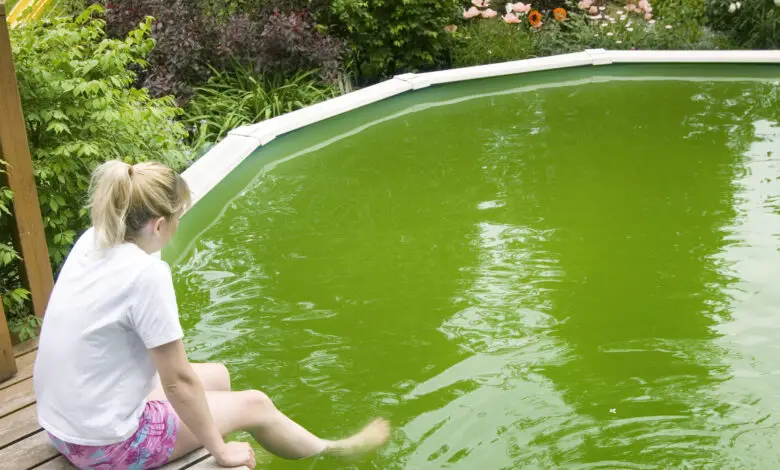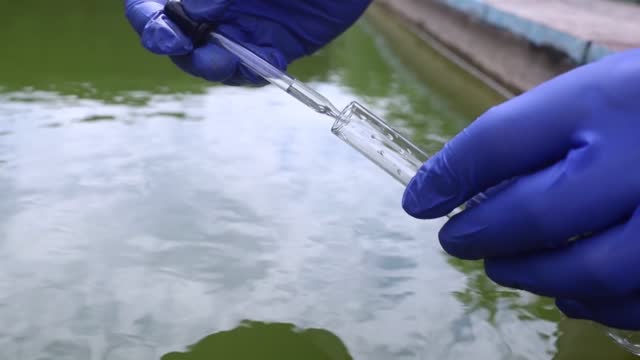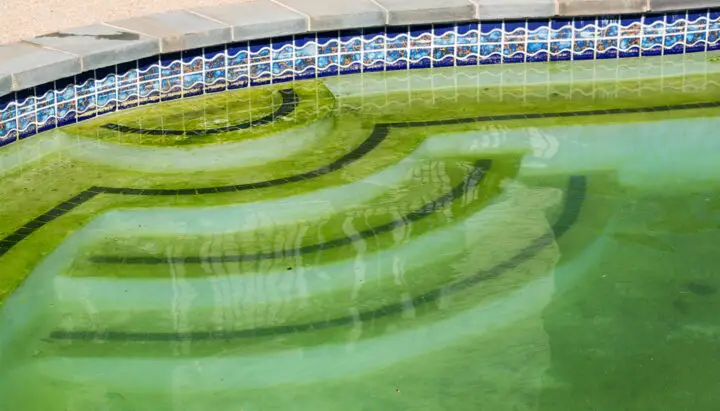How to Clean a Green Pool: Expert Tips for a Crystal-Clear Oasis

Turning a green, algae-infested pool into a crystal-clear oasis is a challenge many pool owners face. This comprehensive guide will walk you through the process step by step, providing expert tips and techniques to ensure success.
Understanding the Green Menace
When your pool turns green, it’s primarily due to algae growth, which occurs when chlorine levels are too low to effectively sanitize the water. Algae thrive in warm, stagnant water, especially if the pH and alkalinity levels are imbalanced. Understanding this is key to tackling the issue. Algae not only make your pool look uninviting but can also create a habitat for mosquitoes and other pests, while potentially damaging the filtration system.
Testing and Balancing Water Chemistry

The first step in clearing is to test the water. You’ll need to check the pH, chlorine, and alkalinity levels. Ideally, the pH should be between 7.2 and 7.6, and the alkalinity between 80 and 120 ppm. Adjusting these levels is crucial because if the pH is too high or too low, chlorine won’t work efficiently. You can use pH increasers or decreasers and alkalinity increasers to adjust these levels. It’s also important to check the stabilizer (cyanuric acid) level, which helps maintain chlorine effectiveness in sunlight. If you need help from professionals when it comes to balancing the water chemistry, check out pool cleaning Sacramento.
Shocking the Pool
Once the water chemistry is balanced, the next step is to shock it. The shock is a form of super-concentrated chlorine that kills algae and bacteria. The amount of shock you need depends on the size and the extent of the algae problem. Generally, you’ll need to use a lot more shock than you would for regular maintenance — sometimes up to ten times the normal amount. It’s best to do this in the evening or at night, as UV rays from the sun can reduce the effectiveness of the chlorine.
Brushing and Filtration
After shockingit, brushing is essential. Use a brush to scrub the sides and bottom vigorously. This helps loosen the algae, making it easier for the chlorine to kill it. Following this, run your pool’s filtration system continuously for at least 24-48 hours. The filter will remove dead algae and other debris from the water. You may need to clean or backwash your filter several times during this process if it becomes clogged with algae.
Vacuuming the Pool
Once the algae is dead, it will turn a grayish color and settle at the bottom. You’ll need to vacuum it to remove this debris. For severe algae infestations, consider vacuuming to waste, which means bypassing the filter and sending the water directly out of the pool. This prevents the dead algae from clogging up your filter.
Maintaining Clear Water
After clearing the algae, it’s crucial to do proper maintenance to prevent future outbreaks. Keep up with regular testing and balancing of the chemistry. Ensure that the chlorine levels are always at the appropriate level and adjust as needed based on usage and weather conditions. Also, running the pool’s filter regularly and keeping it clean will help maintain clear water.
Routine Cleaning
Regular cleaning is also important for maintaining a clear pool. This includes skimming the surface to remove leaves and other debris, brushing the sides and bottom of the pool, and vacuuming regularly. These steps help prevent algae from gaining a foothold in your pool.
Preventative Measures
To further prevent algae growth, consider using an algaecide as part of your regular pool maintenance routine. Algaecides can help control and prevent algae, but they should be used in addition to, not in place of, maintaining proper chlorine levels.
Professional Help
If you’ve tried all these steps and your pool remains green or keeps turning green, it might be time to call in a professional. A pool service company can diagnose and treat problems that might be hard to identify, such as issues with your pool’s circulation system or hidden algae colonies.
Enjoying Your Crystal-Clear Oasis
Once you’ve turned your green pool into a clear, inviting oasis, regular maintenance is key to keeping it that way. Enjoy the fruits of your labor with a refreshing swim in your beautifully clear pool. Remember, consistent care is the best way to ensure your pool stays clean and clear all season long.
Managing Filtration and Circulation
An often-overlooked aspect in maintaining a pool is the role of the filtration and circulation systems. A good filtration system is vital in keeping the water clear and free of microscopic algae spores. Regularly cleaning and maintaining your filter, whether it’s a sand, cartridge, or diatomaceous earth (DE) filter, ensures it works efficiently. Moreover, proper water circulation prevents stagnant areas where algae can grow. Make sure to run your pump long enough each day to circulate all the water in the pool, typically around 8-12 hours, depending on the size of your pool and the efficiency of your pump.
The Importance of Regular Water Testing

Regular testing is the cornerstone of a healthy pool. Even after clearing a green pool, frequent water tests are crucial to prevent a recurrence. Weekly testing of pH, chlorine, alkalinity, and stabilizer levels is recommended. In periods of heavy usage or during very hot weather, more frequent testing may be necessary. Keeping a log of your test results and the chemicals you add allows you to understand your pool’s unique chemistry and how it reacts to different conditions.
Seasonal Considerations
Seasonal changes can significantly impact your pool’s maintenance needs. In the summer, higher temperatures and increased usage can deplete chlorine levels faster and make the pool more susceptible to algae growth. In contrast, during the cooler months, you might need to adjust your maintenance routine due to reduced evaporation and chlorine consumption. Understanding these seasonal dynamics is essential for keeping your pool clear year-round.
End Note

In conclusion, cleaning a green pool and maintaining it as a crystal-clear oasis is a continual process that requires attention to detail, a solid understanding of pool chemistry, and regular maintenance. By following these steps and tips, you can ensure your pool remains a healthy, inviting space for everyone to enjoy.
